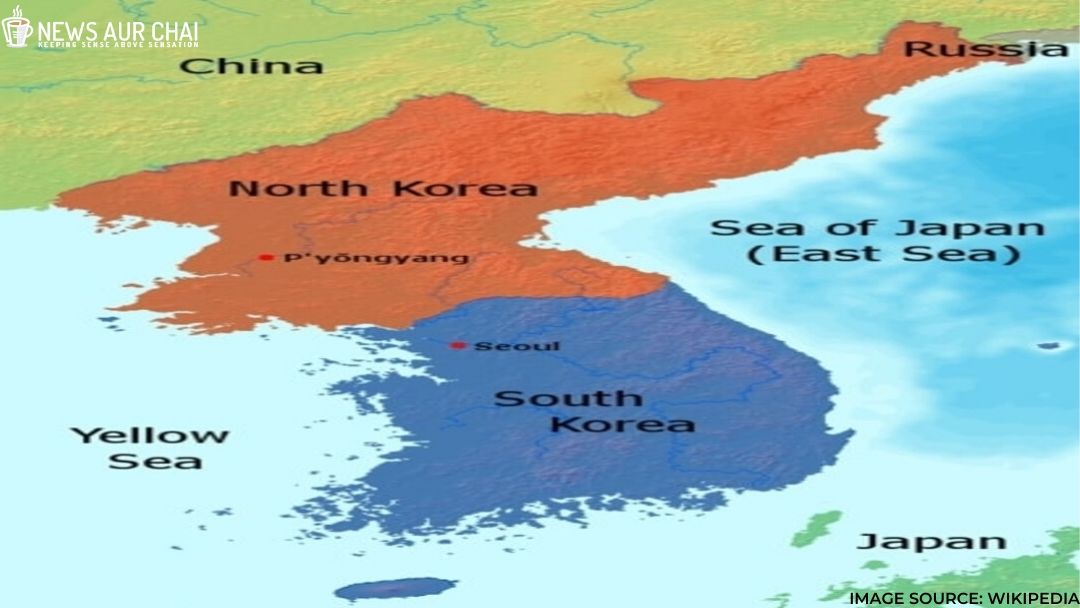
North Korea‘s army has warned it is ready to re-enter the demilitarized zone dividing the two Koreas, if defector groups from South Korea continue with their campaign to send propaganda leaflets across the border, media reports said on June 16.
On Saturday, Kim Yo-jong, the sister of North Korean leader Kim Jong-un, and a senior official of the ruling Workers’ Party, said she’d ordered the army to prepare for the step. Following which the military now says it is ready to “turn the front line into a fortress and heighten military vigilance”.
In response to the threat, South Korea’s defence ministry responded that they are closely monitoring military moves in the North, by working along with the US.
South Korea also said that the defector groups’ actions increase cross-border tensions, pose risks to residents living near the border and cause environmental damage. The sending of leaflets across the border was also banned under the 2018 agreement.
When did it all began?
On June 9, 2020, North Korea said that it is cutting all hotlines with its ‘enemy’ South Korea. First step towards removing all possible contact with the country. This comes after North Korea warned South Korea of shutting an inter-Korean liaison office and other projects, as a result of South Korea’s inability to stop defectors and activists from sending leaflets, usually sent via balloons land other material into North Korea.
Response of defectors group:
Several defector-led groups send leaflets, together with food, one-dollar bills, mini radios and USB sticks containing South Korean dramas and news, over the border and have said they will continue with their planned campaign this week despite the North Korean threats and South Korea saying it will take legal action.
History of Unrest:
The North and South Korea had come together as one country in the seventh century under the Silla dynasty. They remained one up to the year 1945. Despite being similar in many ways and staying together for an extended period, the country got split in two.
Timeline of events
- The First Sino-Japanese War (1894-1895) was the triggering point which led to the division between North Korea and South Korea. Known as the Chino-Japanese War, it is the conflict between China and Japan for supremacy in Korea. The war was declared on August 01 1894, marking the emergence of Japan as a significant world power and also showcased the weakness of the Chinese Empire.
- By March 1895, the Japanese had invaded Shandong (Chinese province) and Manchuria (Chinese region). They had surrounded the posts that commanded the sea approaching towards Beijing. The Chinese begged for peace. In the Treaty of Shimonoseki, which ended the ongoing fight, China recognized the independence of Korea and surrendered certain Chinese areas.
- Japan later occupied Korea after the Russo-Japanese in 1905. It grew tired of the Japanese Rulers.
- The Second World War (1939-1945) was what led to its division into North Korea and South Korea. At the end of this war, the Soviet Union and the United States of America (USA) liberated Korea from the imperial Japanese Colonial Control on August 15, 1945. Michael Robinson, professor emeritus of East Asian Studies and History at Indiana University, who has written extensively on both modern Korea and its history had mentioned that “The catalyzing incident is the decision that was made-really, without the Koreans involved-between the Soviet Union and the United States to divide into two occupation zones.”
- The Korean War (1950-1953), which killed around three million people, was a war which started when North Korea invaded South Korea. This war is famous for ending up killing a massive number of people, without resulting in any change elsewhere. The war ended on July 27, 1953, when the Korean Armistice Agreement was signed. However, the aftereffects of the war still continues.
- The two Koreas are separated by the demilitarized zone, a four-kilometre wide strip running along the thirty-eighth parallel, which splits the Korean Peninsula roughly in half.
Peace Treaty on Korean peninsula (2018)
North Korea and South Korea continue to be the worst of enemies, with one or the other issue rising every now and then. Despite the disputes arising on a ‘regular’ basis. The Peace Treaty on the Korean Peninsula is a proposed settlement to end the never-ending fight on the Korean Peninsula officially. Kim Jong-un (North Korea), Moon Jae-in (South Korea), Donald Trump (USA) and Xi Jinping (China) signed this Treaty in 2018. The main aim of this Treaty was to end the Korean War and restore friendly relations between the two governments.
Economies today
- North Korea’s economy is tightly controlled and closely held. It is generally unable to meet the needs of its people;
- South Korea has constant progress, showing growth and increase in its production.
Tensions continue between the two; however, South Korea had tried to improve its political relations with North Korea in the past. Nonetheless, the defectors actions have caused both the nation to begin another series of turmoil.
South Korea’s President Moon Jae-in urged Pyongyang on June 15 to keep peace agreements entered by the two leaders and return to dialogue.
Uncertainty lingers as the defectors group refuse to comply with the rules with South Korea unable to stop them. One can only hope that the citizens will be safe, and the entire world will not become a victim of its new war’s outbreak.





